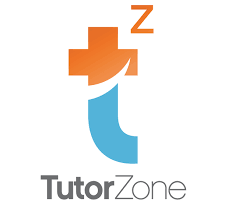Children learn how to read, on average, at about the age of 6 or 7 years old.³ During this time, kids start to participate in elementary school reading activities which are derived from the several methodologies available for instructors to teach reading.³ It is incredibly essential for reading to be present in the curriculum of the early instructional stages. Students ordinarily grasp the meaning formed by the arrangement of letters on a page by the first or second grade, although there have been cases of outstanding toddlers who–as young as 3 years old!–begin to make the necessary associations between spoken language and the sounds of written words.³ Yet, this ideal of starting to read from a young age is not achieved by all elementary learners and some kids struggle with very basic mastery of reading well into their later K-12 school years. Reading level variation among students in different age groups speaks to the mystery of how humans gain proficiency in this subject. Taking a close look at the strategies implemented by schools in their curriculum so that kids can learn to read will perhaps clarify where the teaching patterns best succeed.
Sighting “whole-words” in the Whole Language Approach
In the Whole Language Approach (WLA), reading comprehension abilities are developed as children engage with books, slowly memorize “whole” words, and make connections between those complete words and real life.⁴ The approach is based on a 1970s philosophy that highlights how important it is for children to have the ability to think about their thinking (otherwise known as metacognition).⁴ ⁹ ¹¹ Literacy is achieved because sight words–words that occur with high frequency in reading–can be quickly identified.⁴ We recurrently see “sight” words printed or spelled out. The child’s memory bank learns to promptly recognize them through consistent exposure and this increases the supply of words stored in their brain for easy retrieval.⁴ The whole language approach favors the use of skills applied in both writing and reading over a heavy focus on phonics, which relies on the memorization of parts of words, letter sounds, and symbols.⁴
A sound-driven, parts-of-words focus in Phonics
Phonics Instruction, defined as the science of sounds and acoustics, has been tested as a method to teach reading for centuries.⁵ Children study the individual letters of the alphabet (called phonemes) in the phonics approach. In doing so, they learn to recognize entire words by combining and blending each of their sounds.⁴ ⁷ “Sounding out” words is a principal decoding strategy in phonics; it places value in the characteristic sounds of letter groups, especially syllables.⁴ While gaining knowledge of the alphabet, students pair the associations of explicit letter sounds with spoken and written language.⁶ Here, spelling and grammar are prioritized before meaning-making, the latter of which is a key step of the whole language approach.⁴ Repeated spelling practice is important to solidify that the student has a clear understanding of word-parts’ sounds, to ensure that the student does not guess when they encounter unknown words containing the same letter groups, and to help them successfully apply decoding skills when needed.⁶
Balanced Literacy, the approach most used in classrooms
Balanced Literacy is a newer avenue to teach reading, originating in the 1990s, and it involves many curricula from both camps, using phonics instruction in combination with teaching strategies from the whole language approach.⁸ In balanced literacy, all of the processes associated with learning to read are perceived to be equally important. The various learning systems include phonics, phonemic awareness, fluency, vocabulary, comprehension, oral language, and writing.¹⁰ The approach also emphasizes that getting kids excited about learning to read through the practice of exposing them to assorted quantities of books and paths for grasping the skill is the key to reading success.¹ Balanced literacy appears with high frequency in school curriculum. Even at the teacher-training stage, this method is often recognized as the foremost approach to use in the teaching of reading and, similarly, a number of authors will sell balanced literacy as the go-to strategy.¹ To understand its popularity in the classrooms, consider that a 2019 survey by Education Week determined: A) more than 70% of teachers use balanced literacy in elementary school (particularly between the K-2 years) as well as in special education, and B) 65% of college professors teach balanced literacy to aspiring instructors.¹
Is there a best way to learn to read?
All types of reading instruction are grounded on the idea that new readers will eventually discover the underlying code found in the written language through a student’s perpetual interaction with books. Truly, there isn’t a single instructional method that is the catch-all for every kid in the “learning to read” process. Some kids need a large amount of specific, guided instruction while other kids pick up reading quickly and independently. Furthermore, the numerous approaches aim to separately categorize the spectrum of classroom reading activities in order to support the intentional development of distinct skills; yet, all of the skills are necessary for the human brain to link pronunciation, spelling, and meaning.¹ For an examination of the effectiveness of the aforementioned approaches to teach reading–Whole Language Approach, Phonics Instruction, and Balanced Literacy–up next, we’ll study the critiques that teachers and scientists of reading have with respect to each methodology!
By Daisy Ocampo
References:
Emily Hanford. Sold a Story: How Teaching Kids to Read Went So Wrong | Podcast (apmreports.org)
https://www.usnews.com/education/k12/articles/when-do-kids-learn-to-read
Whole Word method vs. Phonics | Which METHOD is Better? | Reading Wars
The Balanced Approach to Literacy – What Is It and Why Is It Effective? (kidskonnect.com)
Whole language approach: Reading is more than sounding out words and decoding (phys.org)

